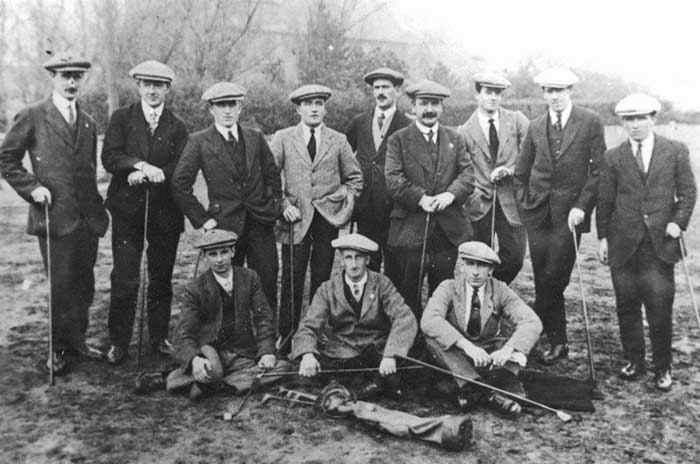HOW DID THE GOLF GAME BEGIN
HISTORY OF GOLF
Golf, a cross-country game in which a player strikes a small ball with various clubs from a series of starting points (teeing grounds) into a series of holes on a course. The player who holes his ball in the fewest strokes wins. The origins of the game are difficult to ascertain, although evidence now suggests that early forms of golf were played in the Netherlands first and then in Scotland.
From a somewhat obscure antiquity, the game attained worldwide popularity, especially in the 20th century. Nothing is known about the early game’s favourite venues on the European continent, but in Scotland golf was first played on seaside links with their crisp turf and natural hazards. Only later in the game’s evolution did play on downs, moorland, and parkland courses begin. Golfers participate at every level, from a recreational game to popular televised professional tournaments. Despite its attractions, golf is not a game for everyone; it requires a high degree of skill that is honed only with great patience and dedication.
ORIGINS OF GOLF
The origin of golf has long been debated. Some historians trace the sport back to the Roman game of paganica, which involved using a bent stick to hit a wool- or feather-stuffed leather ball. According to one view, paganica spread throughout several countries as the Romans conquered much of Europe during the 1st century bc and eventually evolved into the modern game. Others cite chuiwan (ch’ui-wan) as the progenitor, a game played in China during the Ming dynasty (1368–1644) and earlier and described as “a game in which you hit a ball with a stick while walking.” Chuiwan is thought to have been introduced into Europe by traders during the Middle Ages. However, upon close examination, neither theory is convincing.
Similar Topics
Other early stick-and-ball games included the English game of cambuca (a term of Celtic origin). In France the game was known as chambot and may have been related to Irish hurling and Scottish shinty, or camanachd, as well as to the French pastime (derived from an Italian game) of jeu de mail. This game was in turn exported to the Low Countries, Germany, and England (where it was called pall-mall, pronounced “pell mell”).
As early as 1819 the English traveler William Ousely claimed that golf descended from the Persian national game of chaugán, the ancestor of modern polo. Later, historians, not least because of the resemblance of names, considered the French cross-country game of chicane to be a descendant of chaugán. In chicane a ball had to be driven with the fewest possible strokes to a church or garden door. This game was described in the novels of Émile Zola and Charles Deulin, where it went by the name of chole.
Chicane closely resembled the game of kolf, which the Dutch golf historian J.H. van Hengel believed to be the earliest form of golf. Many traditions surround the game of kolf. One relates that it was played annually in the village of Loenen, Netherlands, beginning in 1297, to commemorate the capture of the killer of Floris V, count of Holland and Zeeland, a year earlier. No evidence supports this early date, however, and it would seem to be a clear anachronism.
Based on the evidence, it may well be that golf came into being only a little before the 15th century. It may be conceived as a domesticated form of such medieval games as football, in which the size of the goals and the ball was radically reduced and in which, as a consequence, the element of violence had to give way to the element of skill. Seen from this perspective, golf would be the result of the process of civilization as described in the work of German-born sociologist Norbert Elias.

